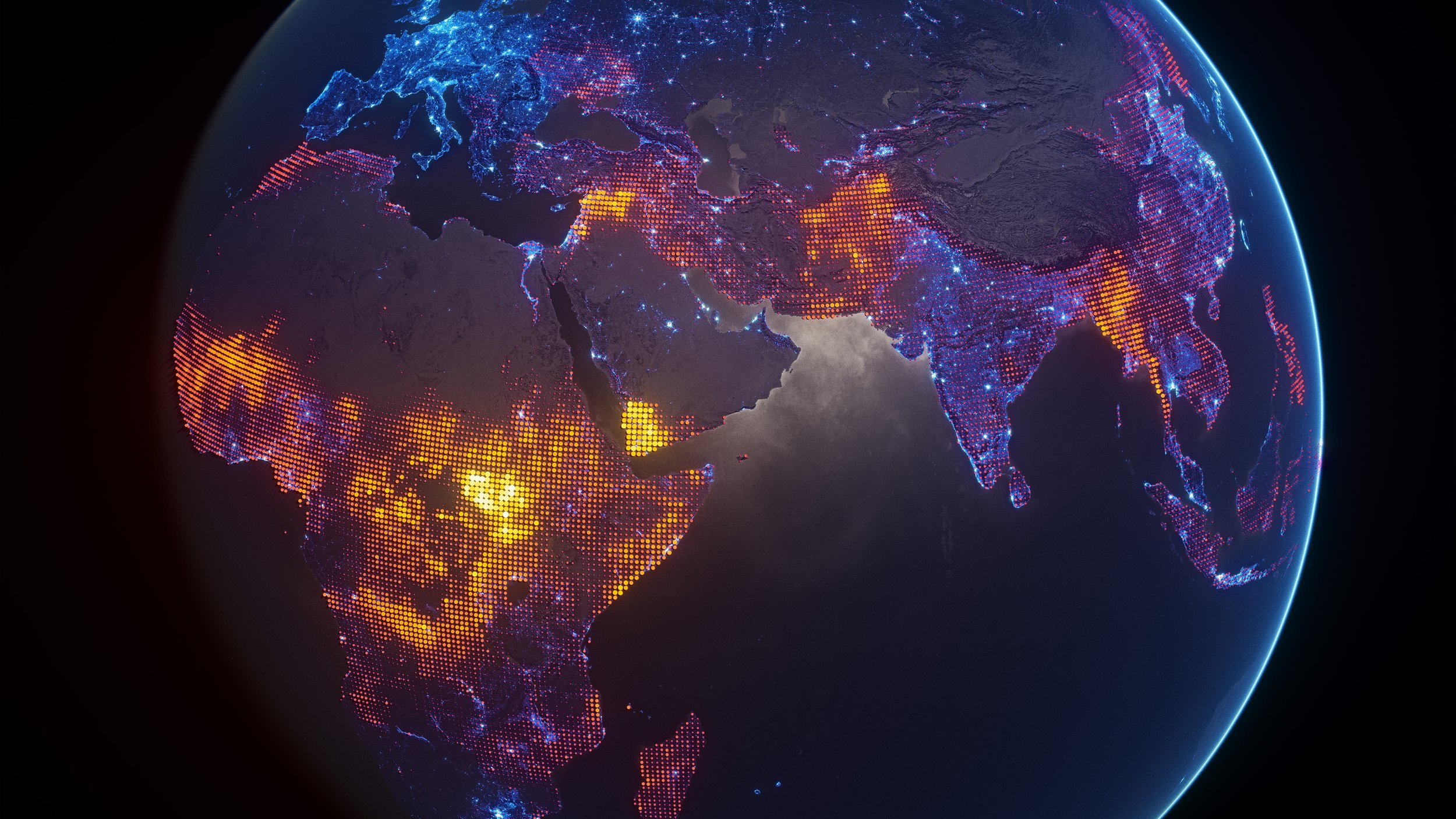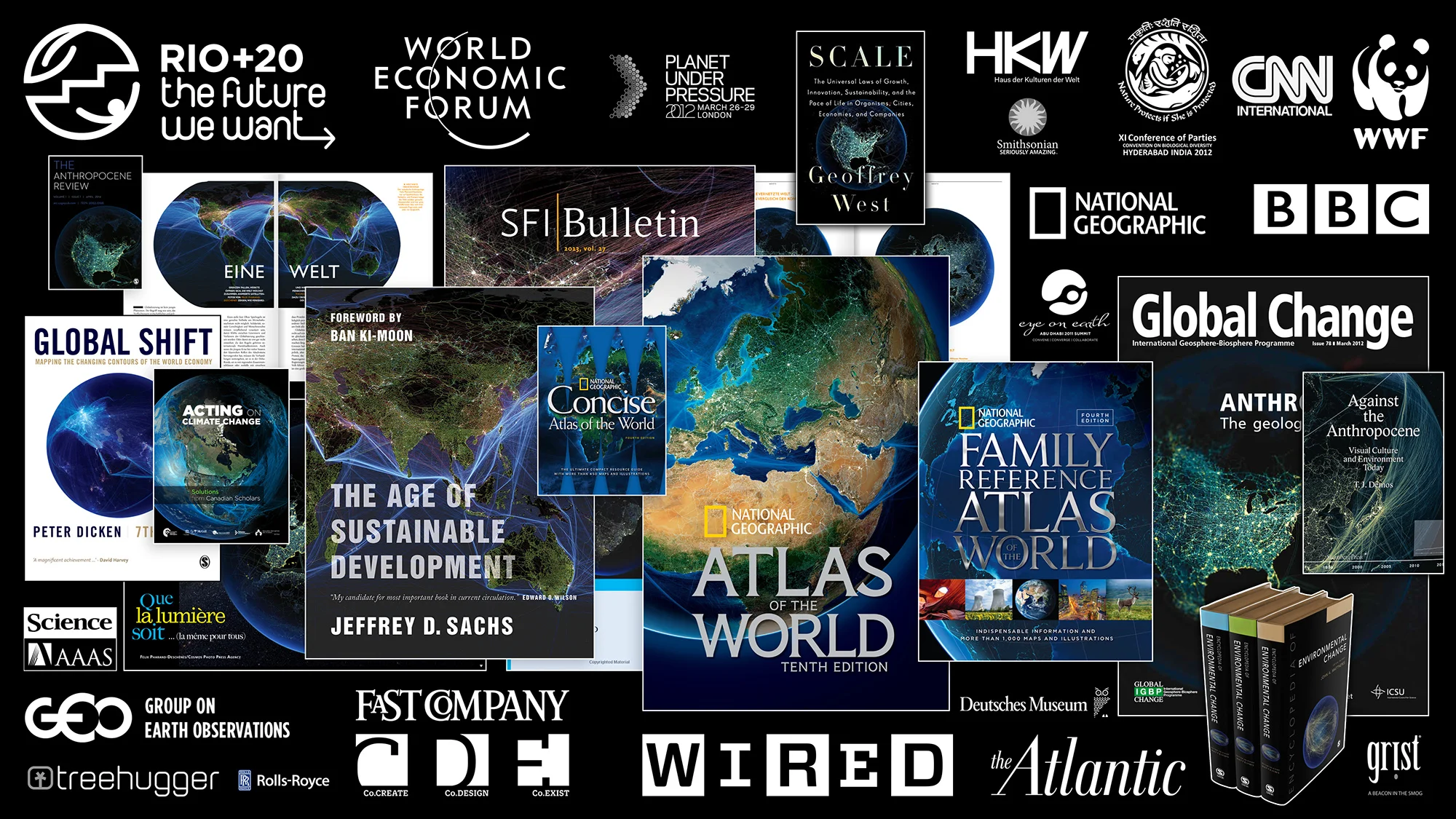
🚀✨
International Recognition
GLOBAÏA's compelling visual representations of the Anthropocene epoch and its impact on our planet's ecosystems have garnered widespread international acclaim. Prestigious scientific journals such as Science and Nature have highlighted our work, which is celebrated for its meticulous examination and powerful visual storytelling. Prominent media outlets like CNN and Gizmodo have also acknowledged our contributions.
Our narratives have been displayed at major global events, including the United Nations General Assembly, the Rio+20 Earth Summit, and the World Economic Forum. Moreover, our imagery has appeared in National Geographic atlases, adorned the covers of numerous books, and has been integrated into documentaries narrated by Sir David Attenborough, which have been featured on leading streaming services like Netflix and BBC One.
This level of acknowledgement has been both humbling and inspiring for us. By making our content accessible and engaging, we hope to inspire a greater sense of responsibility and urgency for protecting our environment and taking meaningful action to address the issues related to the Anthropocene.
Testimonials
“Watch this video ‘Welcome to the Anthropocene’”
“Oh. Lordy. Watch Anthropocene Mapping in HD fullscreen if you can. “What a piece of work is man” cuts two ways.”
“Globaïa’s visualizations of the Anthropocene and the planetary boundaries framework are truly iconic. They have made a significant contribution to how we see the planet we live on. Globaïa’s work is more than simply excellent communication. It is helping change how we think: it makes us aware of our planet, and our impact on it, in new ways. Today, this work has never been more important as we navigate towards a safe operating space for humanity.”
“With its videos and maps, Globaïa has invented a new style of visual information aimed at disseminating scientific data on ecological problems. The reproduction of “hyperobjects” with expanded space-time scales represents a real challenge to the traditional representation systems.”
“Your video does the best job I’ve ever seen of showing VISUALLY how pervasive - both widespread and dense - human activity in the biosphere has become.”
“Your awesome graphics have definitely been getting the Anthropocene message across loud and clear!”
“An interesting video I narrated for the UN and Convention on Biodiversity”
“The world’s leading visualizers of human impact.”
“Wow! You guys are incredible. Your video short is a rare combination of packed information and lyrical beauty. Congratulations. Your stunning anthropocene maps are chillingly beautiful, and a phenomenal way to dramatize our impact on the world.”
“Keep up the wonderful work. Such powerful graphic images may do a lot to catch the attention of people confused by global-change-denial propaganda!”
“I greatly enjoyed perusing the gallery of Anthropocene maps and am pleased to have contributed to some of them in an indirect way. The maps are both beautiful and make a necessary statement about the human imprint on our planet.”
“I must say, however, that you have beaten us hands down on visualising biodiversity. The image you sent Clinton is just wonderful. Yes, it’s artistically compelling, but what matters most to us is how rich it is scientifically. There’s a lot of information here that will combine to drive scientific study and exploration. Every museum show have sets of these maps on their walls!”


